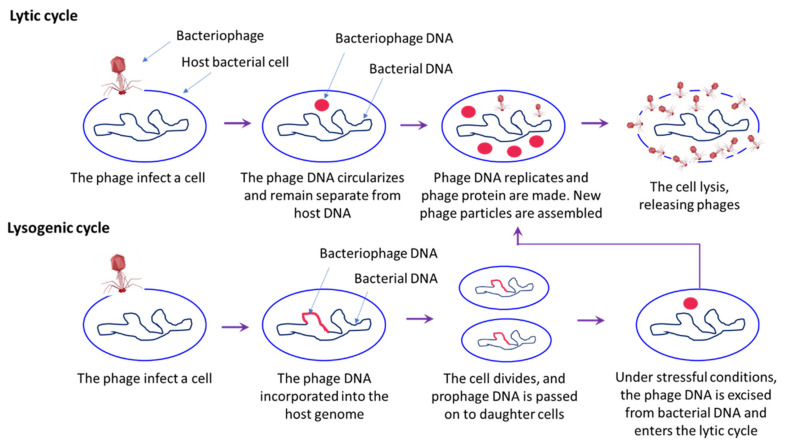Figure 6.
A schematic overview of the bacteriophage life cycle, including lytic and lysogenic cycle. In lytic cycle, bacteriophages infect the host and release of viral genome into bacterial cells. Once a phage infects a bacterium, it shuts down the defence mechanism and takes over its cellular machinery to synthesis new phage particles. The number of phage particles synthesized eventually reaches a point where they rapture the bacterial cells resulting in release of phage particles into the environment that then infects the new host. In lysogenic cycle, phage DNA is incorporated into the bacterial host genome, where it is passed on to the subsequent generations. Environmental stressors such as starvation or exposure to toxic substances may cause the prophage to excise and enter the lytic cycle.

